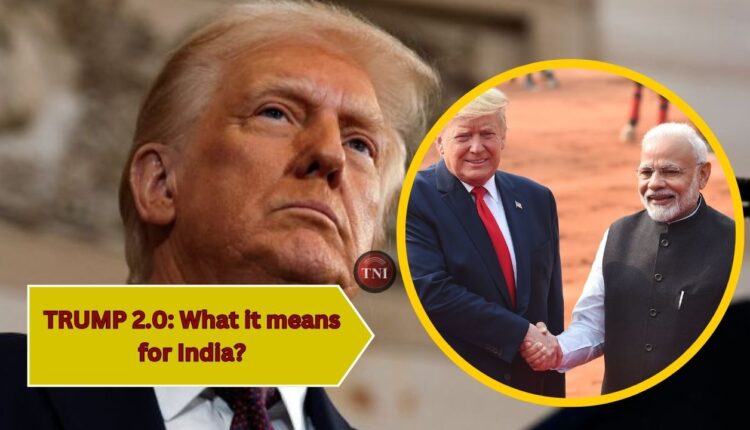Trump 2.0: A New Twist in India-US Ties
During his first term, Trump emphasized a transactional approach to diplomacy, favoring direct deals over multilateral commitments.
Donald Trump’s potential return to the White House in 2025 would undoubtedly spark significant curiosity in India about how the bilateral relationship might evolve. During his first term, Trump emphasized a transactional approach to diplomacy, favoring direct deals over multilateral commitments. For India, this manifested in a blend of opportunities and challenges. A second Trump presidency could bring both continuity and unpredictability, shaping a unique chapter in Indo-US relations.
Economic engagement is likely to remain a focal point. Trump’s “America First” policy during his first term often clashed with India’s “Atmanirbhar Bharat” (self-reliant India) aspirations, leading to trade disputes and tariff battles. However, Trump also recognized India as a key market and a vital economic partner, especially as tensions with China escalated. Under Trump 2.0, India might expect a continuation of protectionist tendencies, but there could also be efforts to deepen cooperation in sectors like technology, defense, and clean energy, driven by mutual strategic interests.
In defense and strategic matters, the India-US relationship flourished under Trump’s first term, marked by significant arms deals and deepened military cooperation through agreements like COMCASA (Communications Compatibility and Security Agreement) and BECA (Basic Exchange and Cooperation Agreement). With China’s growing assertiveness in the Indo-Pacific region, a Trump administration is likely to double down on strategic partnerships like the Quad, providing India with an opportunity to strengthen its role as a regional power.
Support Independent Journalism? Keep us live.
Immigration and visa policies, however, could be a point of contention. Trump’s hardline stance on immigration, including restrictions on H-1B visas, affected thousands of Indian professionals. While his administration valued India’s talent pool, the emphasis on protecting American jobs often led to restrictive measures. A second Trump term could bring more of the same, requiring India to advocate strongly for its diaspora and workforce in the US.
Culturally and diplomatically, Trump’s personal rapport with Prime Minister Narendra Modi was a hallmark of his first term, highlighted by high-profile events like “Howdy Modi” in Houston and “Namaste Trump” in Ahmedabad. This camaraderie underscored the importance of people-to-people ties between the two nations. Trump 2.0 might seek to leverage this relationship, but the unpredictability of his foreign policy approach means India would need to carefully navigate areas of disagreement without jeopardizing broader cooperation.
One of the biggest uncertainties would be Trump’s approach to global geopolitics. His disdain for multilateral institutions and unpredictable policy shifts could have implications for India’s global aspirations. At the same time, his tougher stance on China and Pakistan aligns with India’s strategic concerns, offering opportunities for collaboration on counter-terrorism and regional stability.
Ultimately, India’s expectations from Trump 2.0 would revolve around balancing strategic alignment with economic pragmatism. While his presidency could offer avenues for deeper cooperation, India would need to remain prepared for surprises and recalibrations. Navigating this dynamic relationship with clarity and confidence would be key to ensuring mutual benefits in an evolving global order.


Comments are closed.